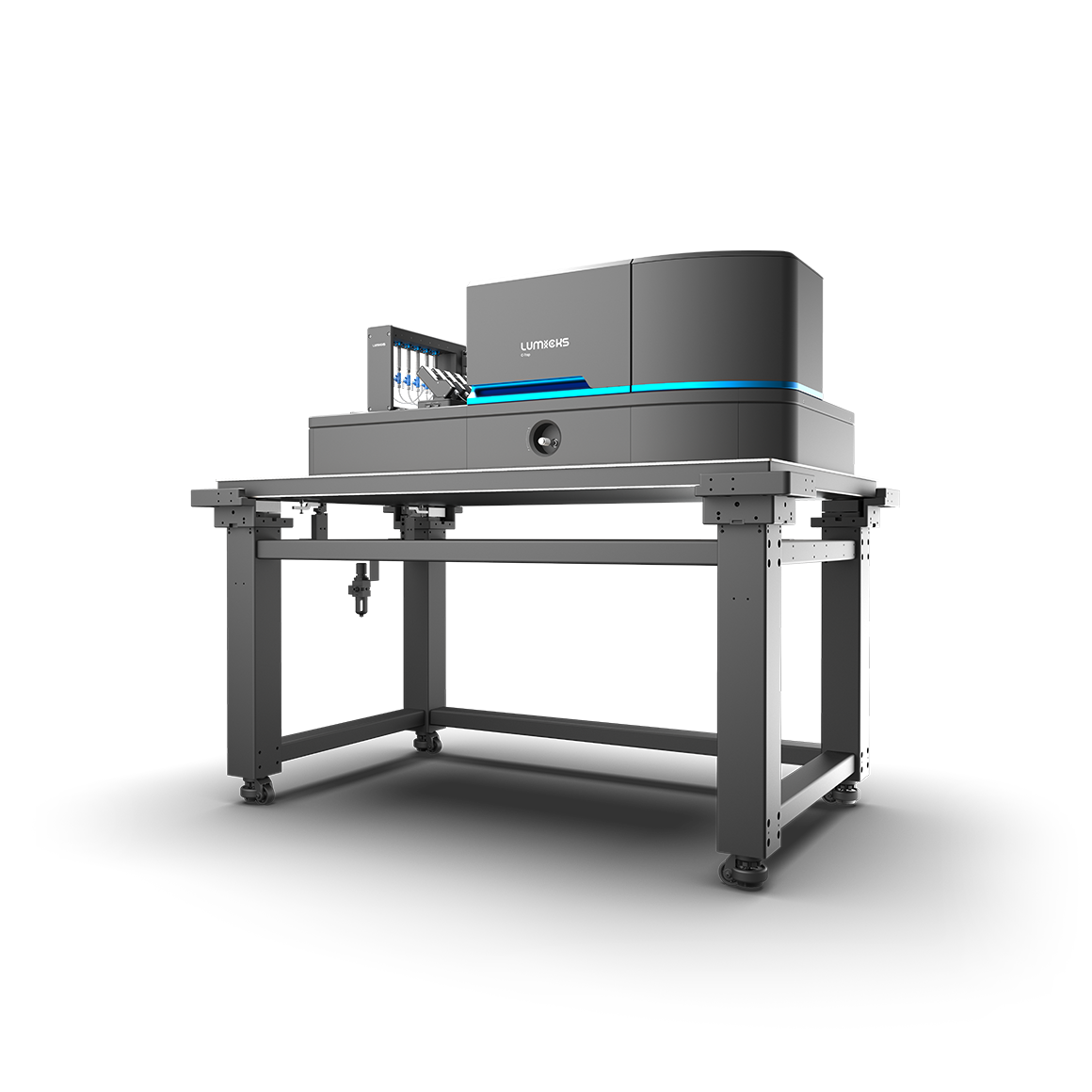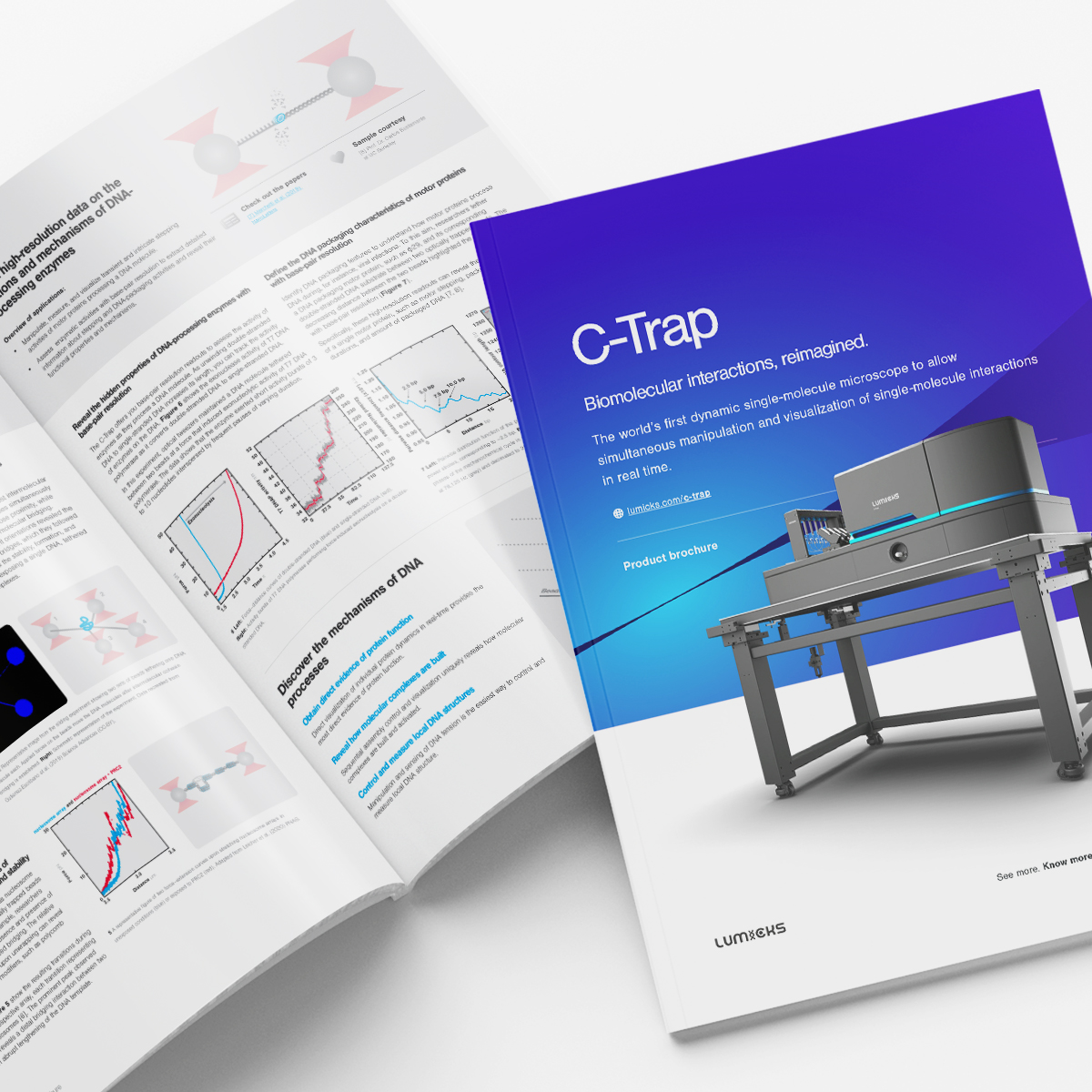The interactions and dynamics of DNA-binding proteins in action
- Visualize how DNA-binding proteins locate, bind, and move along DNA at the single-molecule level
- Measure binding kinetics, affinity, and specificity in real time
- Uncover how these proteins regulate processes like transcription, replication, repair, and genome organization
Explore your research application
Study and visualize DNA replication mechanisms at the nanoscale
Study and visualize DNA transcription mechanisms at the nanoscale
Reveal the dynamics of DNA repair mechanisms
Discover the mechanisms and roles of chromatin organization and decipher the epigenetic code
Reveal the structural dynamics of RNA & DNA in real time
Study and visualize DNA editing mechanisms on the nanoscale
C-Trap
Biomolecular interactions re-imagined
The C-Trap® provides the world’s first dynamic single-molecule microscope to allow simultaneous manipulation and visualization of single-molecule interactions in real time.

Filter DSM shows 3 items
To show 1 or more authors, we are using finsweet attributes v2
The publications detail page has the format for these authors
Phase-separated NDF−FACT condensates facilitate transcription elongation on chromatin
GAGA zinc finger transcription factor searches chromatin by 1DÐ3D facilitated diffusion
Substrate accessibility regulation of human TopIIa decatenation by cohesin
Filter DSM and show 4 latest
This shows the most recent card of each resource type filtered on Business Unit
Webinar, Scientific update, Whitepaper, Application note, Brochure.
We only show 4 and we have 6 types so the 2 older ones are hidden.
In design only 1 is shown, but the rest will be loaded when published.
Mechanisms of chromatin remodeler target search and nucleosome mobilization
Chromatin remodelers play a pivotal role in gene regulation by shaping the physical structure of DNA around promoters and regulatory elements. While their biochemical activities are well studied, existing analytical methods fall short in capturing their dynamic activity and the mechanisms by which they search for and engage their targets. This limitation hinders deeper functional assessment, which is essential to the drug development process.
This webcast will explore how individual remodeler proteins including SWR1, RSC, and ISW2 navigate the chromatin landscape by scanning, sliding or hopping to locate and reposition nucleosomes, ultimately influencing access to DNA by transcription machinery. It will feature recent discoveries using single- and dual-color single-molecule tracking with optical tweezers to investigate the one-dimensional (1D) diffusion behaviors of three conserved yeast remodelers—SWR1, RSC, and ISW2—on DNA and sparse nucleosome arrays.
The findings reveal a unified framework for how chromatin remodelers navigate chromatin landscapes to regulate promoter accessibility through coordinated search and remodeling dynamics. They offer new insights into the physical mechanisms underlying gene expression and genome organization, while opening avenues for further exploration of chromatin dynamics and therapeutic strategies.
Linking Mechanical Stability with in vivo Recombination: Single-molecule Research Reveals Bacterial Antibiotic Resistance
Golden Gate meets C-Trap: A powerful combination for unprecedented molecular insights
Precisely manipulating genetic material at the single molecule level is gaining importance across life sciences – and so do the tools that allow researchers to do exactly that. The C-Trap system combines single molecule fluorescence microscopy with optical tweezers to manipulate DNA, allowing researchers to directly observe and track molecular events as they occur. Designing and creating specific DNA constructs is crucial for maximizing the potential of single molecule studies. In this application note we introduce the powerful combination of cutting edge biochemistry and single-molecule visualization methods to increase throughput and maximize the results gained from each individual measurement.
C-Trap Product Brochure

















